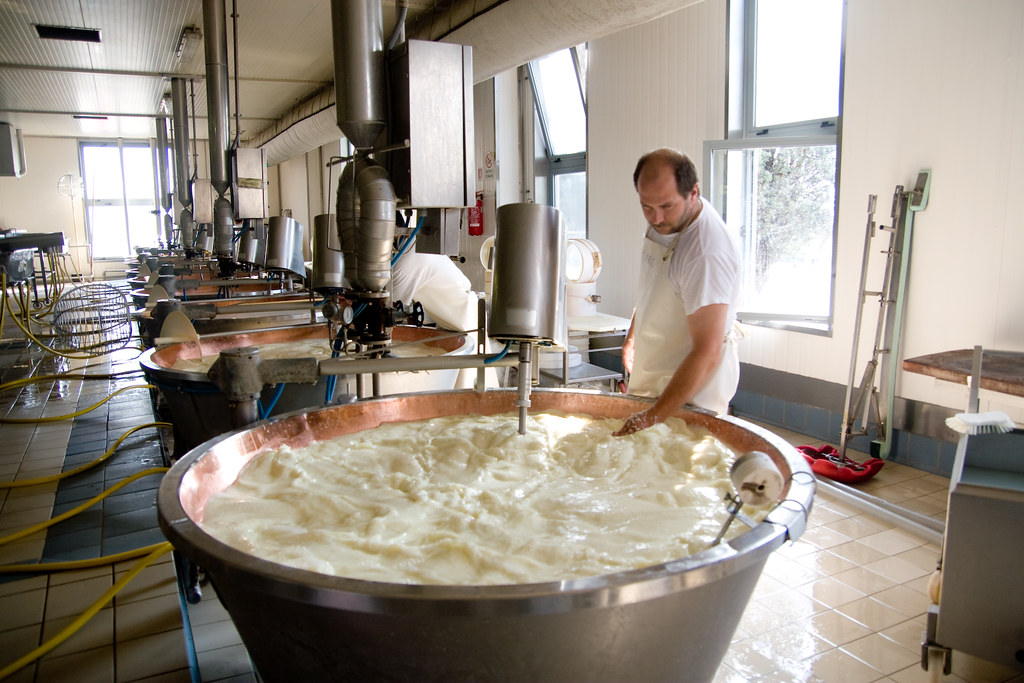Behind the Scenes with Cheese Makers Melbourne: Including Floridia Cheese
Behind the Scenes with Cheese Makers Melbourne: Including Floridia Cheese
Blog Article
Unlocking the Tricks of Artisanal Cheese Making: A Detailed DIY Overview
In the realm of culinary craftsmanship, artisanal cheese making stands as a testimony to the fragile equilibrium in between practice and technology. As we embark on this trip to debunk the art of developing elegant cheeses, we are faced with a tapestry of abilities and keys waiting to be untangled.
Choosing the Right Milk
When starting the trip of artisanal cheese making, the selection of milk plays a crucial duty in establishing the quality and qualities of the end product. The type of milk selected affects the flavor, appearance, and overall profile of the cheese. Raw milk, directly from the animal, is chosen by lots of artisanal cheesemakers due to its unique blend of enzymes, bacteria, and taste substances. However, using raw milk includes threats and regulations, making pasteurized milk a safer option for novices.
When choosing milk for cheese making, it is very important to take into consideration the fat web content. Higher fat material in milk can lead to a creamier and richer cheese, while reduced fat web content might lead to a drier and firmer appearance. In addition, the source of the milk, whether from cows, goats, sheep, or buffalo, adds distinct flavors and qualities to the cheese (Cheese Makers Melbourne). Each kind of milk brings its own nuances, permitting for a wide variety of cheese varieties to be crafted based upon the picked milk. Ultimately, the selection of milk is a fundamental choice that sets the structure for a successful artisanal cheese-making undertaking.
Culturing and Coagulating
To launch the cheese-making process, the critical steps of culturing and coagulating should be very carefully executed to change milk right into curds and whey. Culturing includes presenting helpful microorganisms to the milk, which then starts the fermentation process. These microorganisms transform lactose (milk sugar) right into lactic acid, developing the acidic environment essential for coagulation. The type of culture used can considerably impact the taste, appearance, and ripening of the last cheese item.

The timing and temperature level control during culturing and coagulation are vital factors that affect the final end result of the cheese. Correct implementation of these steps is essential to make certain the preferred texture, flavor, and uniformity of the artisanal cheese being created.
Draining Pipes and Pressing Curds
After the milk healthy proteins have coagulated and the curds have actually been cut to release whey, the following important step in artisanal cheese making includes draining pipes and pressing the curds to attain the preferred appearance and consistency of the last cheese product. Draining is the procedure of separating the curds from the whey. This can be done by moving the curds into a cheesecloth-lined colander or mold and mildew and enabling the whey to drain pipes off naturally. The moment for draining can vary relying on click here for info the type of cheese being made and the wanted moisture web content.
Pressing helps expel any remaining whey and compacts the curds to develop a strong cheese wheel. Appropriate draining and pressing are crucial steps that significantly influence the high quality and characteristics of the artisanal cheese being produced.
Aging and Flavoring Methods
Executing precise aging and flavoring techniques is crucial in boosting the deepness you can try here and complexity of artisanal cheeses, boosting their preference profiles to charming levels of refinement and sophistication. Aging plays a crucial function in creating the one-of-a-kind tastes and appearances that differentiate artisanal cheeses. During the aging procedure, cheeses are kept in thoroughly controlled settings where aspects such as moisture, air flow, and temperature are controlled to encourage the development of useful molds and germs. This controlled setting enables celebrity to develop gradually, establishing abundant flavors and intricate aromas.
Flavoring techniques likewise add significantly to the final preference of artisanal cheeses. Cheesemakers may pick to introduce added tastes by incorporating components such as natural herbs, seasonings, or perhaps fruits into celebrity during the production procedure. In addition, some cheeses are cleaned or rubbed with various liquids, such as brine or alcohol, to improve their tastes and structures.
Covering and Saving Cheeses

Verdict
To conclude, understanding the art of artisanal cheese making includes carefully choosing the appropriate milk, complying with specific culturing and coagulating processes, draining pipes and pushing curds effectively, and using various aging and flavoring methods. By following these steps faithfully and with attention to information, you can create your own tasty and special cheeses at home. Remember to cover and save your cheeses properly to make sure optimum taste and texture advancement. Delighted cheese making!
Each type of milk brings its own nuances, allowing for a large variety of cheese ranges to be crafted based on the selected milk.After the milk healthy proteins have actually coagulated and the curds have been cut to release whey, the next important step in artisanal cheese making includes draining and pressing the curds to achieve the wanted appearance and uniformity of the last cheese item. Most cheeses need to be covered in wax paper or cheese paper to enable them to take a breath while securing them from drying out. For cheeses that need to continue aging, such as bloomy peels or cleaned skins, ensure they are saved in a trendy setting like a cheese cavern or a refrigerator set to the appropriate temperature. By paying focus to the covering and storage of artisanal cheeses, cheese makers and enthusiasts can protect the integrity of these specials and completely appreciate their intricate tastes.
Report this page